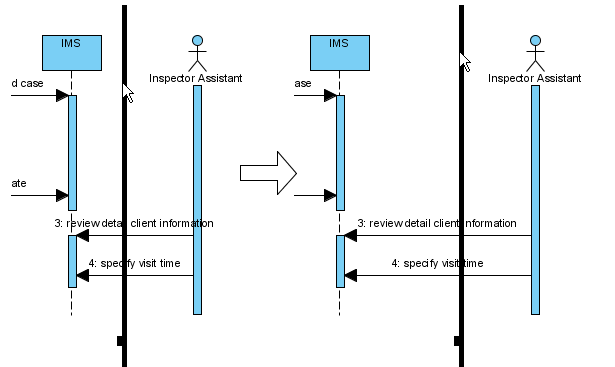

Selic (Eds.), Model Driven Engineering Languages and Systems (pp. Sen, S., Moha, N., Baudry, B., Jézéquel, J. Guest editor’s introduction: Model-driven engineering. Automatic definition of model transformations at the instance level. Rutle, A., Rossini, A., Lamo, Y., Wolter, U.
#Sequence diagram online tool uml 2.5 software#
In: The 31 International Conference on Software Engineering & Knowledge Engineering, (pp. Test case generation by EFSM extracted from UML sequence diagrams. Rocha, M., Simão, A., Sousa, T., Batista, M. Rio de Janeiro: Mcgraw-Hill Interamericana. In: Proceedings of the 2013 International Conference on Software Engineering, ICSE ’13, (pp. Kumar (eds.) Proceedings of International Conference on Advances in Computing, (pp. Automatic test case generation using sequence diagram. OMG, O.M.G.: Unified modeling language 2.5. Journal of Information Technology & Software Engineering 04.

A new approach to derive test cases from sequence diagram. ModelJUnit: The model-based testing tool. The many meanings of UML 2 sequence diagrams: A survey. In: International Conference on Integrated Formal Methods (pp. Using formal specifications to support testing. Hierons, R.M., Bogdanov, K., Bowen, J.P., Cleaveland, R., Derrick, J., Dick, J., Gheorghe, M., Harman, M., Kapoor, K., Krause, P., Lüttgen, G., Simons, A.J.H., Vilkomir, S., Woodward, M.R., Zedan, H. Berlin Heidelberg, Berlin, Heidelberg: Springer. Gogolla (Eds.), Theory and Practice of Model Transformations (pp. From sequence diagrams to state machines by graph transformation. Clarke (Eds.), Model-Driven Engineering Languages and Systems (pp. A., Thiry, L., Wittmann, B., Forestier, G. In: 3rd Workshop in Software Model Engineering, WiSME, (pp. Towards a basic theory to model model driven engineering. Feature-based survey of model transformation approaches. In: 2007 IEEE International Conference on Systems, Man and Cybernetics, 1292–1297.Ĭzarnecki, K., & Helsen, S. Test case generation by means of uml sequence diagrams and labeled transition systems. Berlin Heidelberg, Berlin, Heidelberg: Springer.Ĭartaxo, E.G., Neto, F.G.O., Machado, P.D.L. Towards scenario-based testing of UML diagrams.

An introduction to the atlas model management architecture.īrosch, P., Egly, U., Gabmeyer, S., Kappel, G., Seidl, M., Tompits, H., et al. A case study was conducted in a real software towards the evaluation of its applicability.īézivin, J., Jouault, F., Touzet, D. It also applies ModelJUnit and JUnit libraries for an automatic generation of test cases. This article introduces a systematic procedure for the generation of tests from UML models that uses concepts of model-driven engineering (MDE) for formalizing UML sequence diagrams into extended finite state machines and providing a precise semantics for them. Nevertheless, due to the lack of formal semantics, its diagrams can be given ambiguous interpretations and are not suitable for testing automation. The Unified Modeling Language (UML) has become the de facto standard for software modeling. However, formal models are not a common practice in the industry. One of the most used formal modeling techniques is the interpretation of a system as an extended finite state machine (EFSM). If the model is formal and machine-readable, test cases can be derived automatically. The effectiveness of model-based testing (MBT) is mainly due to its potential for automation.


 0 kommentar(er)
0 kommentar(er)
